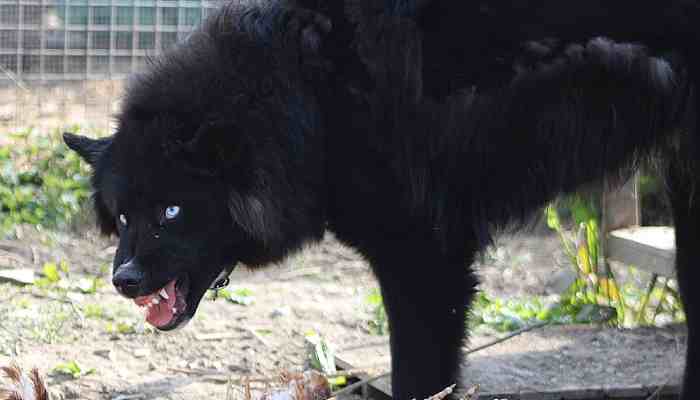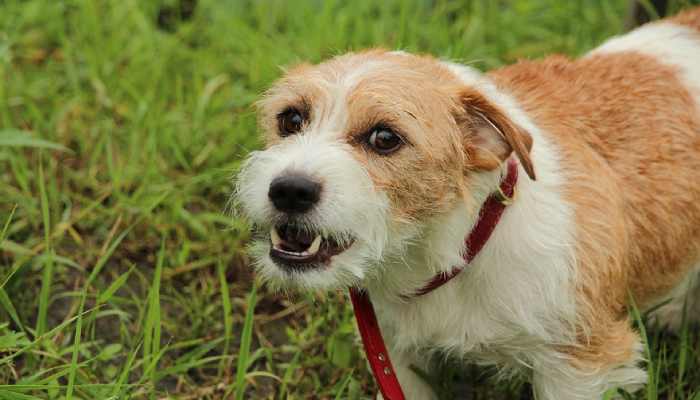Do you have a dog that constantly barks and growls at neighbours and your guests? In that case, you are not alone. Territorial aggression is a problem that affects a lot of dogs, but with the appropriate knowledge and methods, it can be controlled. Here, we’ll go into the subject of canine territorial aggression and examine what it is, why it’s crucial to comprehend it, and what you can do to control your pet’s behaviour in this regard. Keep reading to find out everything you need to know about canine territorial aggressiveness, whether you’re an experienced dog owner or a novice.
I. Causes of Territorial Aggression in Dogs
Territorial aggression in dogs is a complex behaviour that has multiple contributing factors, one of the primary causes is genetics. Some dog breeds, such as the German Shepherd or Doberman Pinscher, are known to be more territorial by nature. This means that dogs from these breeds may be more likely to exhibit territorial behaviour, even if they have not been subjected to any other factors that would contribute to this behaviour.
Another cause of territorial aggression is hormonal influences. Hormones, such as testosterone in males and cortisol in both males and females, can affect a dog’s behaviour. Increased levels of testosterone can lead to increased aggression, while increased levels of cortisol can increase anxiety and fear, which can contribute to territorial behaviour. This highlights the importance of regularly monitoring a dog’s hormone levels and seeking veterinary help if levels are found to be abnormal.
Environmental factors can also contribute to territorial aggression. Changes in the home, such as getting new pets or changes in family members, can disrupt a dog’s sense of stability and security and trigger territorial behaviour. Additionally, past traumatic events, such as being attacked by an intruder, can also contribute to territorial aggression. In such cases, dogs may become more territorial in response to perceived threats as a way of protecting themselves and their territory.
Finally, it is important to note that territorial aggression can also be the result of poor training or lack of socialization. Dogs who have not been exposed to a variety of environments and experiences during their formative years may become more territorial as adults. By providing dogs with positive training and socialization experiences from an early age, owners can help prevent territorial aggression from developing later in life.
II. Signs and Symptoms of Territorial Aggression
Identifying canine territorial aggression is simple if you know what to look for. Barking and snarling at intruders or other perceived threats is one of the most prevalent manifestations. This behaviour can progress to actual violence like biting, charging, or lunging towards the perceived threat. These actions are how dogs protect their territory and let people know to keep away.
Another sign of territorial aggression is marking territory with urine or faeces. This behaviour can occur both inside and outside of the home and is a way for the dog to assert their dominance over a specific area. This can also be a sign of anxiety or stress, so it is important to monitor your dog’s behaviour.
Guarding objects or specific areas is another common symptom of territorial aggression. It can include guarding food, toys, or even furniture and is a sign that the dog views these objects as part of their territory. In some cases, this can escalate to physical aggression if the dog feels that their territory is being threatened.
Finally, it is important to note that territorial aggression can also manifest as aggressive behaviour towards other pets in the household, it includes growling, biting, or even attacking other pets and is a sign that the dog views the other pet as a threat to their territory.
III. Assessment and Diagnosis of Territorial Aggression
Preventing territorial aggression in dogs requires a multi-faceted approach that addresses both the underlying causes and the behaviour itself. One of the most effective ways to prevent territorial aggression is through proper socialization and training. Exposing dogs to a variety of environments and experiences from an early age can help them develop a more confident and well-adjusted personality, reducing the likelihood of territorial behaviour later in life.
Another important factor in preventing territorial aggression is providing dogs with a stable and predictable environment. This means avoiding major changes in the home, such as the addition of new pets or changes in family members, as much as possible. Additionally, it is important to provide dogs with a consistent routine and plenty of exercise and mental stimulation to help keep them calm and relaxed.
In cases where territorial aggression has already developed, it is important to seek veterinary help as soon as possible. Treatment may involve a combination of behaviour modification techniques, medication, and environmental changes. Behaviour modification techniques, such as desensitization and counter-conditioning, can help dogs learn to associate intruders or perceived threats with positive experiences, reducing the likelihood of territorial behaviour. Medication, such as anti-anxiety medication, can help reduce anxiety and stress, which can contribute to territorial behaviour. Finally, making environmental changes, such as providing a designated safe space for the dog, can help them feel more secure and reduce the likelihood of territorial behaviour.
IV. Treatment of Territorial Aggression in Dogs
Dealing with territorial aggression in dogs requires a comprehensive approach that addresses the underlying causes and the behaviour itself. A combination of behavioural modification techniques, medication-assisted treatment, and consultation with a professional is often the most effective approach.
Behavioural Modification Techniques
Behavioural modification techniques are an important component of treating territorial aggression in dogs. These techniques can include desensitization and counter-conditioning, which involve gradually exposing the dog to the source of their aggression while associating it with positive experiences. For example, if a dog is aggressive towards intruders, the owner can slowly expose the dog to the presence of strangers while providing treats and praise. Over time, the dog will learn to associate intruders with positive experiences and reduce their aggressive behaviour.
Medication-assisted Treatment
In some cases, medication-assisted treatment may be necessary to treat territorial aggression in dogs. Anti-anxiety medication, such as benzodiazepines, can be used to reduce anxiety and stress, which can contribute to territorial behaviour. In addition, certain types of antidepressant medication can be used to help manage territorial aggression, particularly in cases where the behaviour is linked to underlying psychological or neurological conditions.
Importance of Consultation with a Professional
Consulting with a professional, such as a veterinary behaviourist or certified dog behaviour consultant, is crucial in treating territorial aggression in dogs. These professionals have the experience and knowledge necessary to develop a comprehensive treatment plan that addresses the specific needs of each individual dog and their owners. They can also provide support and guidance throughout the treatment process, helping owners to understand and manage their dog’s behaviour.
V. Prevention of Territorial Aggression
Preventing territorial aggression in dogs is key to ensuring a safe and harmonious home environment. By taking a proactive approach and addressing potential risk factors, owners can help prevent territorial aggression before it even starts.
Early Socialization and Habituation
Early socialization and habituation is one of the most important steps in preventing territorial aggression in dogs. Socializing puppies to a variety of people, animals, and environments can help reduce their fear and anxiety, making them less likely to become territorial as they grow older. Habituation, or exposing dogs to a variety of stimuli in a controlled and positive manner, can also help prevent territorial aggression by reducing fear and anxiety.
Appropriate Management and Training
Appropriate management and training can also help prevent territorial aggression in dogs. This includes providing a secure and predictable environment, setting clear rules and boundaries, and providing positive reinforcement-based training. For example, training dogs to greet visitors in a calm and relaxed manner can help reduce their territorial behaviour towards guests.
Avoiding Triggers for Territorial Aggression
Understanding and avoiding triggers for territorial aggression is another important aspect of preventing the behaviour. Triggers can vary greatly between dogs and may include the presence of other animals, people, or unfamiliar objects. By identifying these triggers and taking steps to manage them, owners can help reduce the likelihood of territorial aggression in their dogs.
As you see, territorial aggression in dogs is a complex and potentially dangerous behaviour that requires a comprehensive approach to treatment and prevention. By combining behavioural modification techniques, medication-assisted treatment, and consultation with a professional, owners can help their dogs overcome territorial aggression and live happier, healthier lives. By promoting early socialization, appropriate management and training, and avoiding triggers for territorial aggression, owners can also prevent the behaviour before it even starts. With the right support and guidance, territorial aggression in dogs can be managed and reduced, ensuring a safe and harmonious home environment for both dogs and their owners.




